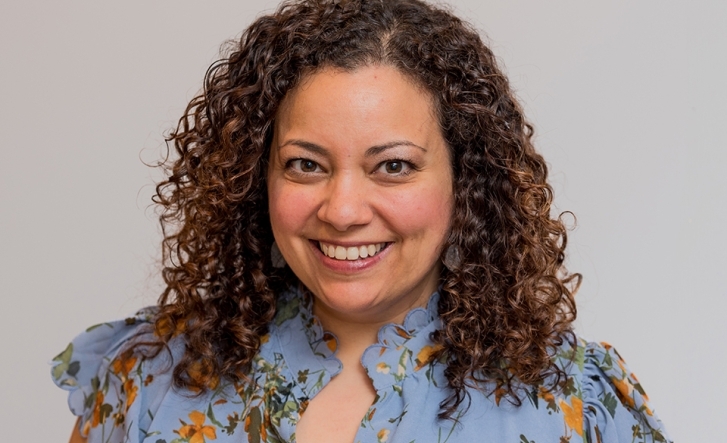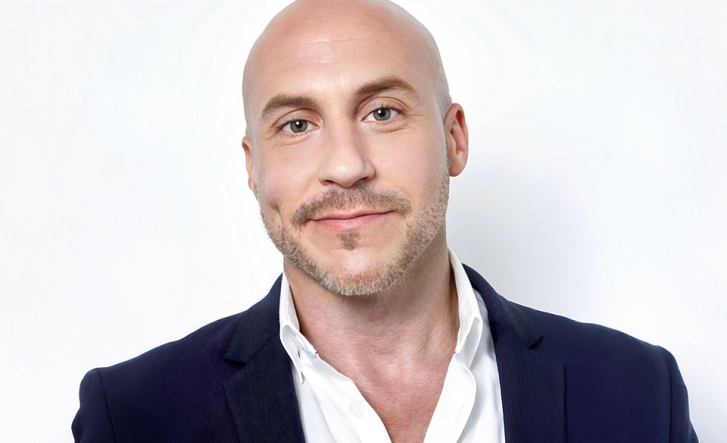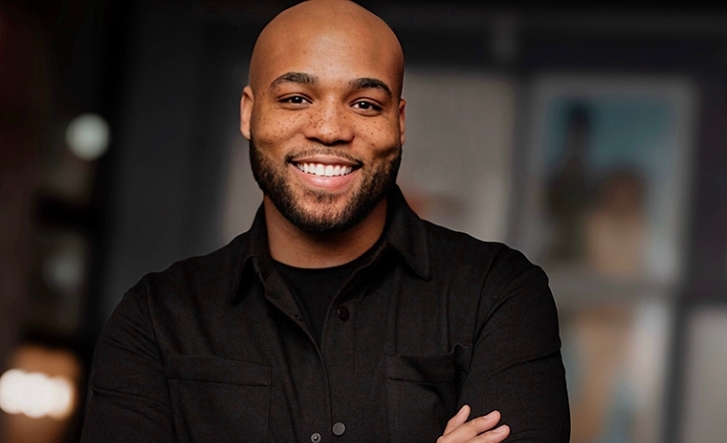Double Alumnus of The School of Education a Lifelong Teacher and Learner
For nearly four decades, Frank Vivona ’65Ed, ’67GEd held administrative positions of increasing importance and responsibility for the New York City Board of Education (now known as the Department of Education), but never stopped thinking of himself as a teacher.

“My coursework in both history and education at St. John’s was invaluable. I felt well equipped to begin my career with the background they provided—and I still use it to this day.
- School Counseling, Master of Science in Education•
- Social Sciences
- The School of Education
Mr. Vivona recently reflected on a lifelong love of history and education—which was cemented at St. John’s University—and his desire to share that passion with students. That enthusiasm continues to this day, two decades into his retirement.
Television was a relatively new medium during Mr. Vivona’s childhood and he was fascinated by the Western genre. “I enjoyed seeing how the settlers lived and survived,” he said. “That fed my appetite for history because the West was a big part of the history of the United States as people sought to better their lives and seek their fortunes.”
Throughout elementary school, Mr. Vivona began to envision himself becoming a teacher. “As I continued my education, it became a stronger impetus,” he explained. “I liked the idea of teaching something in which I was interested—namely, history.”
A native of Ozone Park, Queens, Mr. Vivona’s family moved to Mastic Beach in Suffolk County, NY, when he was a teenager. “It was very rural back then and reading became a diversion. I learned a lot, and it positively impacted my career as a student,” he said.
At Mercy High School in Riverhead, NY, Mr. Vivona recalled several excellent history teachers who cultivated his love of the subject. “I felt inspired to emulate them,” he reflected. “From that moment on, I never wanted to be anything else.”
The son of working-class parents, Mr. Vivona considered attending St. John’s University, but didn’t think it was a realistic option due to finances. That changed one day in his senior year when the principal asked to see him. At that time, St. John’s was offering full scholarships to the top graduates of every Catholic high school in the region—and Mr. Vivona had been named class valedictorian.
“I couldn’t have been happier, because while we were not poor, it was a struggle to maintain a certain standard of living,” he said. “My parents were very happy because they didn’t know how they were going to help me pay for college.”
During his first year at St. John’s, Mr. Vivona commuted from Mastic in his first semester and moved in with his aunt (who still lived in Ozone Park) for his second. He soon realized he needed to be close by to get the most from his college experience and rented an apartment in nearby Flushing with some fellow students. He would eventually meet his future wife of 55 years, Catherine, through one of his St. John’s roommates.
A Social Sciences major (a discipline which was then offered in The School of Education), Mr. Vivona soon immersed himself in campus life. He joined the History Club and made many friends. “It gave me an opportunity to socialize with people who had similar ideas about what they wanted to do with their lives,” he explained.
As an undergraduate, Mr. Vivona student taught at Francis Lewis High School in Queens. “That was very helpful; I learned how to teach there. You can read books, but there’s nothing like being in front of students in a classroom, teaching and being evaluated. I became knowledgeable about young people and learned the tricks of the trade on how to work with them.”
New York State required teachers to earn a master’s degree within five years, so Mr. Vivona chose Secondary School Counseling as his major. “I wanted to have a different background in something related to working in a school in case I wanted to move into another area.”
Mr. Vivona’s favorite instructor at St. John’s was the late Wayne Dyer, Ed.D., who served as an Assistant Professor of Counselor Education. “Dr. Dyer was a famous author and television personality, and I had him for two courses at the graduate level,” he reflected. “I found him to be most interesting and well founded in guidance theory. He communicated very well with us and gave fascinating presentations on thinking, philosophy, religion, and how one could better themselves. He was magnificent—and he taught on the Great Lawn, which was a nice change of scenery.”
After several years of substitute teaching, Mr. Vivona was hired as a history teacher at Newtown High School in Elmhurst, Queens, where he would spend the next six years. “I learned a great deal,” he said. “The department was very helpful to young teachers and the leadership was passionate about the subject. I was mentored by several older teachers and eventually recognized as a person who was capable outside of the classroom.”
He was appointed as a guidance counselor and eventually Dean of Students for Newtown. He also held the title of General Coordinator of Guidance, assisting grade advisors to structure programming for incoming first-year students.
As his responsibilities increased, Mr. Vivona spent less time in the classroom, and more time on matters related to discipline, policy, and curriculum. He was appointed Guidance Advisor for the New York City Board of Education’s Division of High Schools in Brooklyn, NY.
“At first, I wasn’t sure about accepting the position because I still loved teaching,” he explained. “I had several friends at Newtown, but saw it as an opportunity to expand my horizons.”
There, Mr. Vivona conducted informal guidance conferences on students referred to the high school superintendents for disciplinary and guidance matters. Within a few years, he was promoted to Chief Hearing Officer for the Division of High Schools for the New York City Board of Education.
As Chief Hearing Officer, Mr. Vivona represented superintendents of New York City high schools in matters of student suspension, conducting hearings to determine what disciplinary actions students would face if they were guilty of the infractions for which they were accused. He became a sought-after speaker on matters of guidance and discipline throughout the Board of Education and was encouraged to apply for the position of General Assistant to the Superintendent of Brooklyn and Staten Island—which he did successfully.
“It was very intense because I had 11 areas of responsibility for 23 high schools, many of which were in dire need of improvement,” he said. “I was traveling a great deal to schools trying to assist them in any way I could.”
In that role, Mr. Vivona reconnected with his roots as a history teacher as coordinator of Social Studies, meeting with chairpersons of high school departments to discuss curriculum and new ideas. “These were men and women with a lot of experience, and here I was, a regular history teacher, suggesting programming and curriculum changes,” he said.
“With a diverse array of responsibilities, I had to be an organized person—and the tools I gained at St. John’s helped me in that regard.”
After several years in roles of increased responsibility with their attendant stress, Mr. Vivona felt a change was in order. He wanted to return to a high school setting, but not as a teacher. He was appointed Chief College Guidance Counselor at Forest Hills High School in Forest Hills, Queens, where he would spend the remainder of his career.
During Mr. Vivona’s tenure, students at Forest Hills had a 98 percent acceptance rate to college and he helped secure millions of dollars in financial aid for them. He spearheaded several innovations, including an evening college guidance program for parents in which he conducted seminars on the college admission process. In addition to writing thousands of college recommendations, he ran an early morning college guidance program for seniors who wanted assistance with the admission process.
His school had one of the biggest College Night programs in the city, with more than 100 college representatives. Always fascinated by technology, Mr. Vivona pioneered the use of a nascent computer program in the late 1980s, known as Metroguide, which allowed students to research various colleges online.
Marc Zaretsky, a Forest Hills colleague who worked with Mr. Vivona for seven years, recalled, “It was a marvel to witness the professional quality and quantity of his productive output, all aimed at one goal: to help guide thousands of juniors and seniors towards their best futures. At first wide eyed and insecure, youngsters would invariably stride away from sessions with Frank visibly transformed with expressions of self-confidence and empowerment. They knew they had Frank's support as well as the resources to take their chosen next steps.”
After almost 20 years at Forest Hills, Mr. Vivona felt it was time to retire—but teaching remained in his blood. Shortly after moving to a retirement community in St. James, NY, he began offering a history seminar for residents.
“It allows me to retain a sense of youth and vitality, while contributing something important to the life of the community,” he explained.
Still a voracious reader, Mr. Vivona specializes in American history. He finds many residents, especially those who are veterans, are eager to learn more about their country. “I also encourage them to share what they learn with their grandchildren because the history curriculum has become de-emphasized by New York State,” he explained. “We weren’t sure if we would get good turnouts, but on the average, we would get between 35 and 40 people.”
During the pandemic, and Mr. Vivona’s own health struggles—which included triple bypass surgery—the seminar was suspended. He recently resumed the meetings, which has helped rejuvenate his passion for learning and imparting knowledge.
“My coursework in both history and education at St. John’s was invaluable,” he reflected. “I felt well equipped to begin my career with the background they provided—and I still use it to this day. This is kind of a full-circle moment. I began my career as a history teacher and I’m going to end as a history teacher. I enjoyed it very much then—and I still do.”





